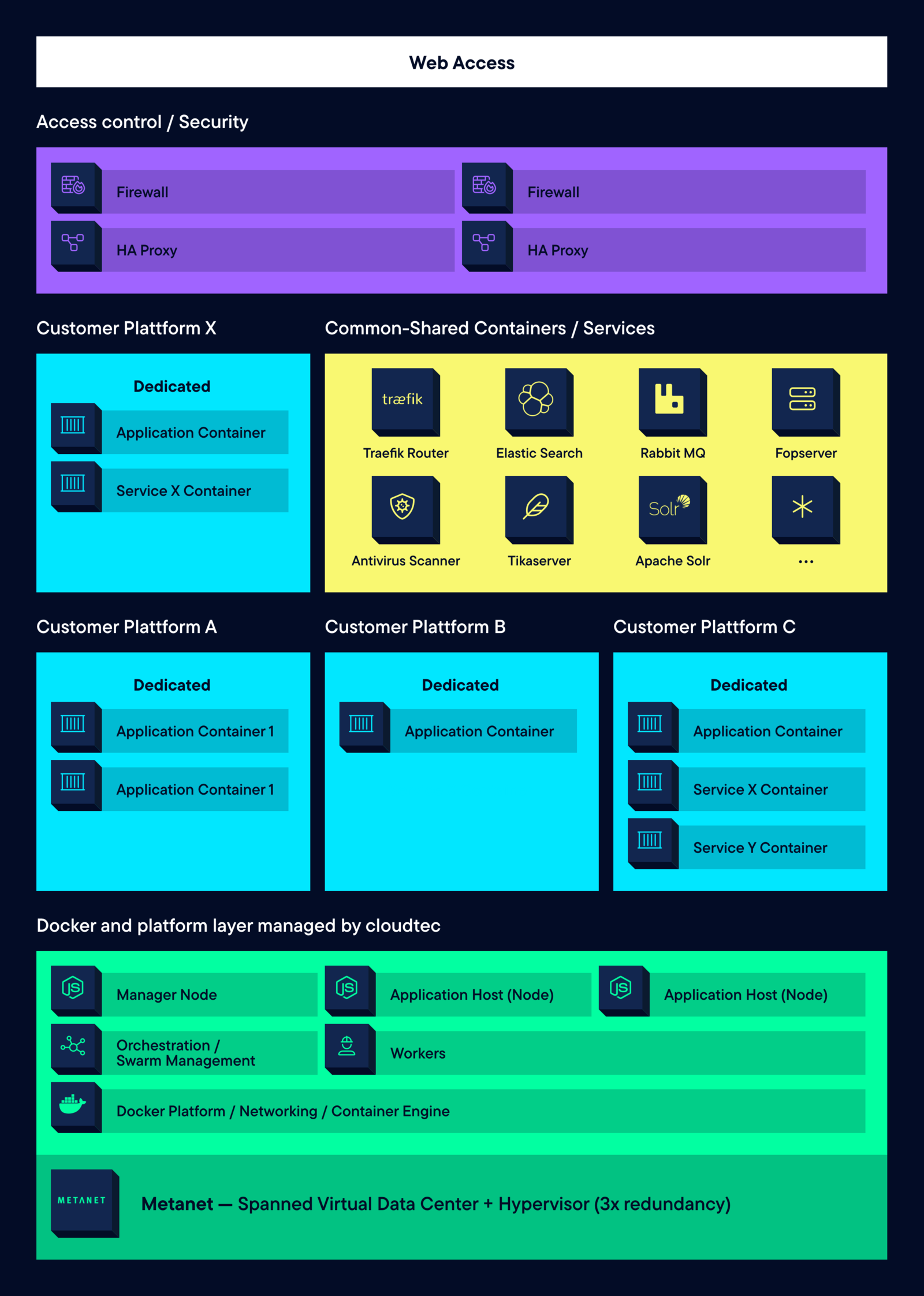The infrastructure is made available to the public via the Internet and is owned by a company that provides cloud services.
These services are shared with consumers, which makes it possible to offer these services on a large scale. Developments are applicable to many user accounts, which makes running the public cloud much cheaper. Small and medium-sized businesses can benefit from using public clouds by reducing the required "growth" of their own data center, thereby reducing costs and increasing scalability and flexibility.
Public clouds are usually accessible through a pay-as-you-go model, where services are offered to the public as "utility computing." The following utility computing providers are a few of the largest in the market: Google App Engine, Microsoft Azure and Amazon Web Services. Building and deploying such infrastructures on a large scale requires investments of hundreds of millions of francs. That's why all major IT companies started investing in cloud-based platforms in the early 2000s. However, big steps had to be taken and technical problems solved over the transformation process of the last decade. Vendors had to develop software responsible for controlling the infrastructure, automatically provisioning new resources, as well as security, scalability and providing a self-contained environment for users.

The figure is a schematic representation of our hosting infrastructure. A cloud infrastructure shared by different clients in a segmented manner. The servers host multiple instances of virtualized clients or applications. A fixed resource pool allocation guarantees that the client gets the computing power agreed upon in the contract and for which it pays with the pay-as-you-go model (Noltes 2011). Security and reliability are often discussed as critical issues in the context of cloud-based services. It is obvious that public clouds are a bigger and more interesting target for hacking attacks, as the damage that can be done is more severe and the probability of getting hold of sensitive data is higher than when attacking private clouds. Therefore, public cloud providers need to be even more careful and invest thoroughly in security measures. Providers can do this on a larger scale and when you look at the system in smaller pieces the cost and quality of security is higher than in a private cloud. The providers of public cloud servers must demonstrate extensive expertise and use this knowledge to protect their systems from external as well as internal attacks.
